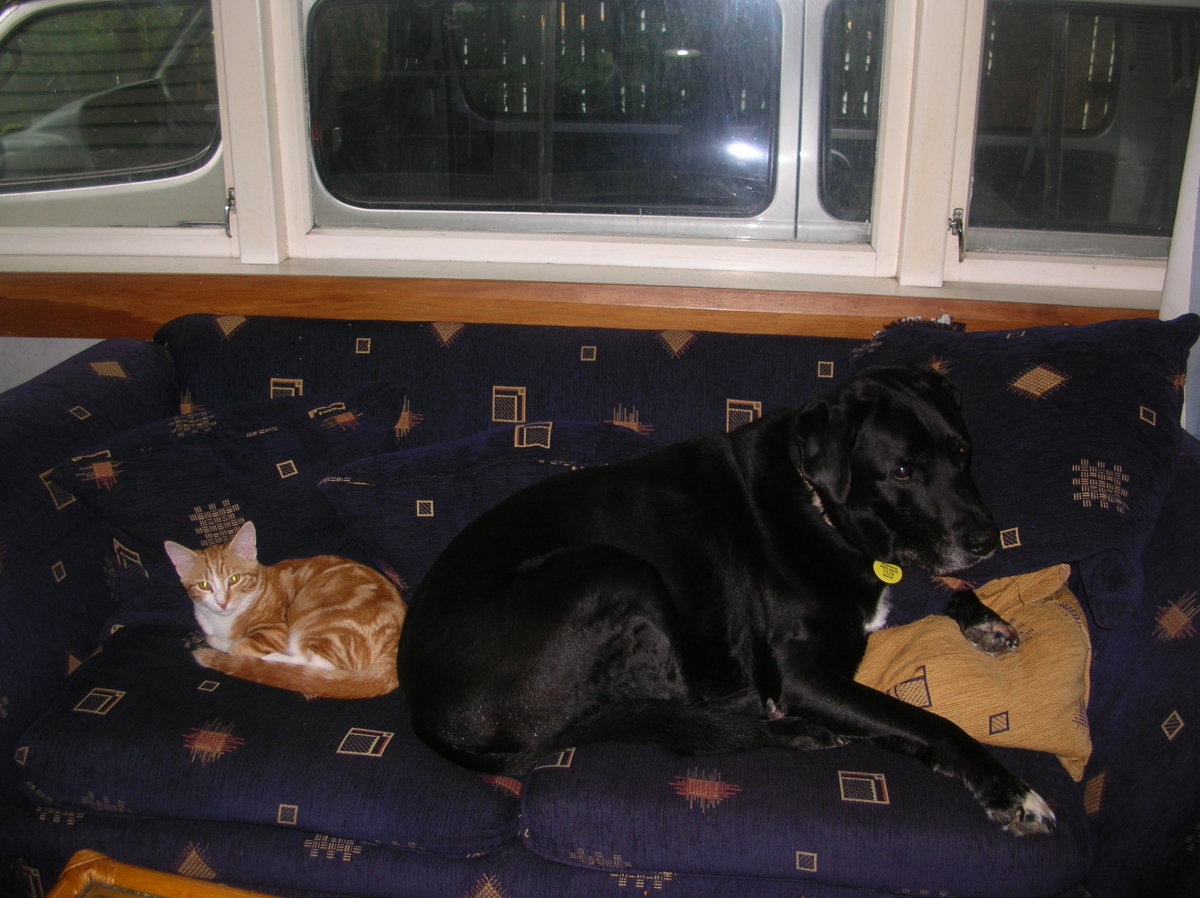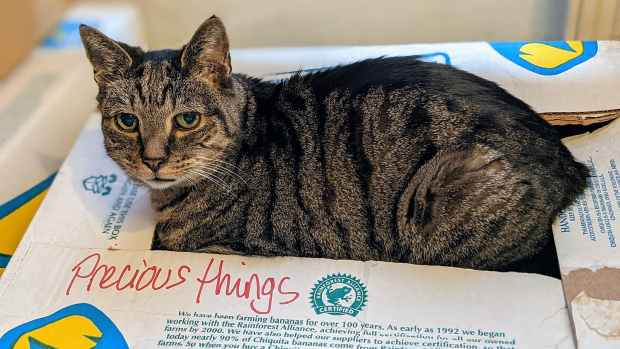I have experience with a dog that had cancer of the spleen. I like sharing
this experience with others.

The first warning sign we noticed in our Labrador was his appetite for grass,
which he would later vomit.
Hemangiosarcoma is a fairly common form of cancer in dogs, particularly in
larger breeds, like German Shepherds, Golden Retrievers, and Labradors.
Hemangiosarcoma is a cancerous tumour that grows on the spleen. Some forms of
this tumour also grow on the skin and under the skin.
Our black labrador cross first drew our attention that he could have problems
when he kept eating grass at every opportunity in an effort to make himself
vomit. He would try vomiting but generally only brought up the grass he had
devoured.
Being notorious for eating anything and everything, we assumed he had
swallowed something that was unable to pass through his digestive system and
needed to come back via the mouth. As a young dog, he had once swallowed a
large “grandfather” marble. The vet couldn’t feel anything, so we assumed he
hadn’t swallowed it until two months later when he vomited up the missing
marble along with copious amounts of grass.
This time the vet decided to X-ray our dog’s abdomen to check for any foreign
objects. To our dismay, a large tumour was found on his spleen. Typically,
these tumours are cancerous and eventually bleed as they grow in blood
vessels. Hemangiosarcoma is an aggressive cancer which spreads quickly to
other areas such as lungs, liver and brain. If left untreated, the tumour will
rupture and internal bleeding will occur.
Our vet explained to us the situation our dog had found himself in and the
likely outcomes depending on what the final biopsy showed. Unfortunately, with
this type of cancer, it is only possible to realize the malignancy of the
tumour once it has been removed. Attempting to biopsy before surgery will
often cause excessive bleeding which can in turn mean the demise of the
animal.
Our dog was typically overweight, as Labradors are fond of food. A number of
things started to niggle at us. If this cancer often resulted in bleed outs or
internal bleeding, and our dog had an extremely large growth, why hadn’t we
seen any sign of this?
Internal bleeding can cause your dog to suddenly collapse and appear very
unwell. The cancer moves on quickly showing more illness. The additional
X-rays taken to determine whether the cancer had progressed to the lungs or
liver proved negative. This seemed a positive outcome considering the size of
the tumour and the likelihood of metastisizing. We considered the
possibilities over the next few days as we tried to make a decision on whether
to operate or not.
The information we received indicated that if we operated, the likely survival
rate would be only two months or so. If we chose not to operate, then a
probable bleed out would lead to imminent death. A difficult decision to make
when you have no idea what your dog actually has.
Many owners decide to have their dog euthanized to alleviate more ill-health.
Deciding to have the tumour removed only to find their dog passes away less
than two months later leaves a lot to be desired. Firstly, the expense of
surgery followed by death soon after makes owners decide on euthanasia. They
feel this is likely to be kinder to their loved dog in the long run.
We contemplated all the likely outcomes with all the information we could
glean from the internet. After going back and forth, we decided the odds were
in our dog’s favour, considering he had never shown signs of internal
bleeding, and since the tumour was large, this should have been happening. We
assumed our chances were OK.
The other factor we took into account was the fact that our dog never appeared
to be unwell apart from eating excessive amounts of grass. He was still
excitable and had his usual insatiable appetite. We had noticed he found it
hard to get himself in a comfortable position when travelling in the car. The
thing that persuaded me it was time to get him checked out was a slight bulge
at the bottom of his ribs on one side.
After consulting with the teaching veterinary hospital at our local
university, we were able to obtain a surgical fee of almost half the price of
the original quoted, so we decided to go ahead with the surgery to remove the
tumour.
Much to our delight, the results of the post-surgery biopsy showed the tumour
to be completely benign. Had the tumour been malignant we would then have to
decide whether to put him through chemotherapy which increases the survival
time considerably and of course costs more money. From our research, we had
read of many cases where dogs who did have malignant tumours have still been
alive two years later, which is quite good considering the prognosis given to
us at the time. There is always hope. Some people choose to change their dog’s
diet to a more natural one after surgery in an effort to increase their life
expectancy. Humans often take this approach themselves when faced with ill
health and I feel it is a valid option.
The spleen had to be removed; however, our vet told us he could live quite
happily without one. The tumour was the size of a soccer ball and weighed two
and a half kilograms. No wonder the poor fellow couldn’t get comfortable in
the car. He was obviously trying to accommodate a large growth. He looked
quite trim after surgery, especially with his stretchy net bandage tube on to
protect the wound.
Scroll to Continue
Read More From Pethelpful

Why Does My Cat Sit on My Stuff?

Tips for Home Care for Your Vomiting Cat When You Cannot Visit the Vet

The Top 10 Fastest Dog Breeds
It has been almost one year since surgery. Although I think he has probably
regained the two and a half kilos, we are so happy to still have him with us,
as he is our friend.
By the way, he is 10-years-old now.
This article is accurate and true to the best of the author’s knowledge. It
is not meant to substitute for diagnosis, prognosis, treatment, prescription,
or formal and individualized advice from a veterinary medical professional.
Animals exhibiting signs and symptoms of distress should be seen by a
veterinarian immediately.
Comments
aj on January 24, 2017:
Im glad to hear your dog is doing good, we had to take my boxador in today
because she was being tired and throwing up and hadnt been able to eat for two
days, we found out she that her spleen was four times the size it should of
been and was bleeding and also had a massive tumor connected to it , also they
found a mass blocking the bladder and her bladder completely full, they could
not empty the bladder because with out removing the mass. We decided to put
her down , they said there was 98 percent it was cancer and they werebt sure
if she could make the three hour drive to get her bladder drain and the
surgery, im not sure we made the right decision.
tebo (author) from New Zealand on January 19, 2017:
Hi teaka. How lucky for you and your dog that the vet was too busy to call on
you and your dog bounced back. Sounds like she is doing well. Interesting that
she has the bleeds and comes right again. Sounds like you are doing all the
right things. Thanks for reading.
teaka on January 17, 2017:
We took our 8 year old lab/beagle mix to an emergency vet 9 months ago who
diagnosed her with a bleeding spleen tumor and recommended either surgery or
euthanization immediately. We did neither and brought her home, to have her
euthanized at home. Our vet couldn’t make a house call for a few days in which
time our dog seemed to get better. I called off the dreaded appointment and 9
months later she is still with us. A happy, running around dog! She has had 2
more of the bleeding incidences. I keep her quiet and give her rimadyl for
pain, knowing this may be her last day. But for now she’s a very active and
happy dog!
tebo (author) from New Zealand on March 17, 2016:
Thanks DDE. I’m glad you liked it and thanks for reading.
Devika Primić from Dubrovnik, Croatia on March 17, 2016:
Thank you for sharing your experience and a helpful hub on this issue. I
learned a lot here and an informative hub.
tebo (author) from New Zealand on March 16, 2016:
Thanks Nell Rose. I hoped it might be helpful to people in the same
predicament. It was pretty exciting when the results came in and it was
completely benign – no further treatment- yahoo!
Nell Rose from England on March 16, 2016:
Wow! what a story! and thank goodness for your common sense, and finding out
that it was benign! I am so glad your dog is well, and this will really help
others, 🙂